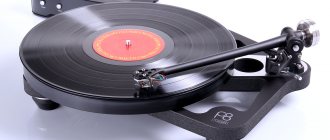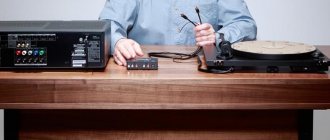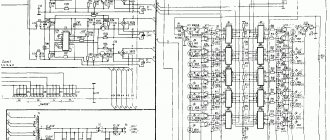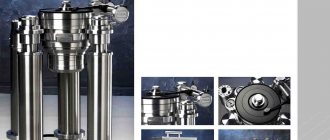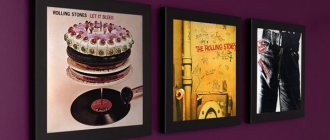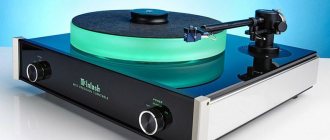In the early 90s of the last century, vinyl or vinyl records began to give way to compact discs. Digital technologies have begun to actively penetrate our lives. As a result, vinyl was almost completely replaced. Only rare performers were released on records in limited editions. But for true music lovers, analog sound has always been and remains indispensable.
- Vinyl: advantages and disadvantages of the material
The average music lover uses not too expensive equipment to listen to music. Therefore, it is almost impossible to distinguish the sound of a vinyl record or a CD. Another thing is when music is listened to on expensive equipment, then you can very clearly feel the difference in sound. Music from vinyl sounds much more luxurious than music from CD.
Easier to use, less demanding to maintain, taking up less space, the CD is much more convenient. But for those who love real sound, it doesn’t matter how much space the record takes up. It is much more important to get more pleasure from listening to your favorite music.
In the meantime, people are arguing about whether a CD or a record is better, the 21st century is coming, the age of digital technology. Now the CD is also fading into obscurity, and music is being distributed via the Internet. In order to listen to music, you no longer need to go to the store. All you have to do is go online, find and pay for music, and in a couple of minutes you are already enjoying the new album of your favorite artist. The time is coming when you can no longer hold music in your hands. Records and CDs will become real rarities. But perhaps even then the debate will continue: which is better - a record or a CD?
So is it still a vinyl record or a disc?
Music still occupies an important place in modern culture. However, it can be problematic to completely lose yourself in your favorite song or mentally transport yourself to the stage of your favorite performer and feel the whole atmosphere of his concert.
Ordinary vinyl records, which, despite the development of technology, are still in demand, will help correct the situation. In addition, due to the renewed fashion for vintage, buying vinyl records can no longer be called something unusual.
Most modern vinyl records are not of analogue, but of digital origin, so the sound quality will not differ much from CD and MP3 media. A traditional vinyl record allows you to fully enjoy the fullness of sound and fully experience the musical performance. In addition, for many fans, the real value is the process of searching for records, as well as watching them spin.
The author of the video compares a vinyl record and a CD using the example of the album “Zoolook” by the French composer and one of the most popular electronic music performers of the last century, Jean-Michel Jarre.
Why you should choose vinyl over a modern disc
- The sound quality is much worse.
- The technologies used to record music on discs cause more harm to health and literally hit the eardrums.
Equally important is that the range of vinyl records is not much inferior to modern discs. With their help, you can listen to music of various genres (folk, grunge, rock, funk, soul, disco, hip-hop, etc.)
Let's talk about vinyl, or rather, let's not even talk, but speculate. Vinyl records, LP, or simply “vinyl” - it doesn’t matter which term you use in conversation, because everyone around you immediately understands what exactly we are talking about, and every day there is more and more talk about vinyl records.
There is no longer any point in denying the “vinyl renaissance”. This has already happened, it has already happened and continues to grow like a snowball, degenerating from the hobby of relatively small groups of listeners into the general interest of the majority. Every year the production and sale of records increases by almost a third. This looks especially strange during the gradual fading of the popularity of CDs and the massive transition of listeners from a collection of records on a shelf to a collection of records on a computer’s hard drive. What this is and what it is connected with is not yet completely clear. Maybe this is a tribute to fashion, or indeed many people believe that vinyl has no equal in sound quality - the reason does not matter, the main thing is that people are drawn to music, and this is wonderful.
Sometimes, you can still hear a surprised exclamation: “What, vinyl records are on sale again and are being made again?” Believe it or not, they didn’t disappear anywhere, but only hid for 1.5 decades in the shadows and waited for their “finest hour.” Indeed, in the 1990s, vinyl left the “walk of fame” of audio media, kindly giving way to the rapidly gaining popularity of the compact disc (CD). Nevertheless, the production of records did not stop, although its volumes fell tenfold. The secondary market for used vinyl records did not disappear at that time either, which is now also gaining momentum.
So what are vinyl records, and why can you love them so much? This is actually a very interesting question. By themselves, vinyl records are a very inconvenient and impractical carrier of audio information. Compared to the same CD, the record is much larger in size, it can only be stored vertically, it is not resistant to scratches and dirt on the tracks, which certainly manifests itself in the sound (clicks, crackles, hissing), it requires special handling, timely cleaning and maintenance, and, most importantly, it is much less durable and quickly becomes unusable (sawed down). In addition, it is worth mentioning that, in general, an LP record costs significantly more than a similar CD. Based on these considerations, you can’t help but wonder what exactly makes millions of people prefer such an impractical medium as a record. If you ask the question: “Why are vinyl records better than CDs,” most respondents will answer that they have better sound quality. Yes, that’s right, everyone believes that sound quality is the main advantage of vinyl over CD. And the most interesting thing is that a similar answer is given even by those who, in principle, are not into vinyl. Do you think this is a stereotype? Perhaps this is so, let's find out.
Are vinyl records really that good? Despite the fact that the majority of those who answered this question affirmatively consider the advantage obvious, I will insist on a detailed analysis of the issue. The key statement, the so-called constant that does not require proof, is that analog sound is recorded on vinyl, which is a priori considered an indisputable advantage. I won’t argue – analog sound is good. But then I will pose the question differently, and we will argue from the position of my unpopular view of the current situation. Which is better: a poorly recorded vinyl record or an amazingly recorded CD? Don’t rush to answer, I already feel that most are ready to shout directly into the monitor: “Vinyl is still better!” Let's objectively approach the consideration of the issue, and with due composure we will accept not only the facts that are pleasing to our ears, but also those that run counter to our traditional ideas.
Let's start with the good: all other things being equal, vinyl is really better, but the conditions are not always equal. By equal conditions, I mean that on the vinyl side there are: a perfectly recorded vinyl record in perfect condition (not filed, without scratches or dirt) with real analog sound, an ideally correctly configured record player (for many settings and parameters), all components which are correctly matched to each other (table, tonearm, cartridge head, phono preamp cable and phono preamp itself). From the CD side, everything is simpler: a high-quality disc and a good player that does not require configuration. As you can see, on the vinyl side there is a much greater chance of making a mistake that will be unforgivable for the sound quality. Any inconsistency between the player components or an error in the parameters and our path begins to limp on one leg.
Let's start with the records. We smash stereotypes to pieces: not all records are as good as we would like. This is true. If in the past, even before the fall in popularity of vinyl in the 1990s, buying a record could be a guarantee of high-quality sound (in the vast majority of cases), then during today's “vinyl renaissance” the purchase can resemble Russian roulette, where there is a chance of being seriously disappointed in the sound. What's the matter? The fact is that today is the era of digital technology! If previously vinyl records were a guarantee of the authenticity of the analog sound recorded on them, today this is not always the case. Unfortunately, not everyone today records analog audio. Often, in the new realities, music is written directly to digital, and then converted to analog and recorded on vinyl records. What results is a not entirely clear manipulation, in which the form remains, but the content initially loses its “analog” quality, since the analog-to-digital-to-analog conversion process took place before recording. You should not expect that the vinyl manufacturer or the artist himself will indicate such a background history of the recording on his albums; you will hear it yourself when you feel the lack of obvious superiority of the vinyl version of the recording over the same, but digital one. If this situation is complicated by errors in the player settings, then the vinyl version of the recording may even lose. Don't be upset, as this is not a universal phenomenon and does not appear in every modern recording. In fairness and not for the sake of advertising, I can say that Diana Krall’s modern recordings “Diana Krall”, for example, the album “Quiet Nights” or the collection “The Very Best of Diana Krall” are recorded so amazingly three-dimensionally, three-dimensionally and naturally that even with open eyes It's hard to believe that the performer isn't standing right in front of you. But Aerosmith’s latest album, “Music From Another Dimension,” which I managed to listen to on vinyl, could not significantly outperform its counterpart on the CD included in the package as a bonus gift. Despite the fact that I didn’t feel a significant advantage, the record sounded decent and took its place in the collection.
So we looked at two options for events with modern records: either an amazing result, or an option whose sound is not much superior to CDs or is exactly the same. In addition to these options, there are several more, for example, poor-quality recording due to the fault of the sound engineer, or the recording process of the record itself, which can lead to a flat sound with “squeezed dynamics,” lack of a sense of natural sound, and other defects that turn the listening process into torture. I also encountered this phenomenon with the example of the “Mutter” album by Rammstein, although I do not exclude the possibility that I came across an unsuccessful edition. In my case, the sound was so disgusting that the record became just part of the collection with no chance of being listened to again. When listening, it seemed as if the album had been recorded on a tape recorder, stuck through the door of a recording studio, and then transcribed onto a record. As a result, a complete lack of dynamics, scope, expression, drive and volume, finally. The CD beat the record by a factor of many. If you carefully look at the information on the Internet, you can find a lot of reviews about the poor recording and sound quality of records from specific recording studios or some albums from certain artists. In these cases, you should choose a high-quality CD over a high-quality LP (unless, of course, you are a collector who simply wants to own all the records, without regard to their quality).
Based on this information, we can already conclude that vinyl is good, but not always. What to do then, maybe you should pay attention to used vinyl produced in the present era of analogue sound? In principle, yes, this is a way out, but even here there are pitfalls. Although, wait, why underwater? The reason is obvious, because these records are over 25 years old! At that time, few people considered vinyl as a collector's item and it was mainly purchased for listening, which means that it most likely spun under the pickup needle more than a dozen times, and maybe even a good hundred. Considering such a long “mileage” of the record, combined with the constant removal/insertion of the record into the sleeve, it becomes increasingly difficult to hope for an ideal sound without crackling and loss of detail (filing). In fact, it’s not all that bad; many records have survived to this day in very good condition. The cost of such records varies greatly depending on their rarity, condition, collectible value and can start from 200 rubles and cost well over 100,000 rubles apiece.
Now that we have clarified the situation with the records themselves and realized that records are very good for sound, but there are some exceptions, it’s time to remember the listening process itself. Even if you have in your hands a perfectly recorded record with a breathtaking sound, this is not a guarantee that your listening experience will remain a delight. A colossal role, along with the quality of the recording on the media, is played by the record player and, in particular, its settings. An LP player is exactly the device that turns a perfect recording into a perfect sound. If all the elements of the player (table, tonearm, pickup head) do not fit well with each other in terms of parameters or the player is configured incorrectly or poorly, then this fundamentally kills the hope of obtaining magical sound. The process of setting up the player is both simple and complex at the same time, since in addition to the mandatory manipulations for setting up in accordance with the manufacturers' recommendations, it includes an experimental part for changing the settings and “adjusting the sound by ear.” For example, a cartridge manufacturer specifies a tracking force range of 0.75 to 1.75 grams and lists 1.25 grams as the optimal value. This value is taken as a basis, and then deviating from it within the specified range, the user determines by ear which sound he likes best: with a slightly reduced downforce or, conversely, with an overestimated one. High-quality setup of a player requires not only extensive experience and knowledge, but also special tools: templates (protractors), electronic scales, level, tuning plates (ideally paired with an oscilloscope) and much more. For this reason, when purchasing a player for the first time, you should entrust its initial setup to a specialist.
So, to summarize: there is an opinion that records themselves are not a panacea for high-quality sound. They can become favorites in terms of sound quality when many factors come together: recording quality, quality and compatibility of equipment, quality of player settings. If all factors coincide perfectly, then compact discs do not have the slightest chance. If you handle the records carelessly and set up the player poorly, you may be forever disappointed in the sound of vinyl. Personally, I have a collection of vinyl records, both new and past. In addition, I do not hesitate to “duplicate” albums on vinyl with similar ones on CDs. The conclusion is simple: you should not put a stamp on digital recordings and give medals to vinyl records, since in both cases there are exceptions.
Author: Maxim Shmelkov
Why do some people say that vinyl has a warmer sound compared to CD?
If vinyl contains a pure analog signal recorded from an analog magnetic master tape, then the low frequencies (which give the sound softness and warmth) are pure. Digital signal processing adds artifacts that are characteristic only of high frequencies (making the sound metallic and cold) to all frequencies, including warm ones. Today, sound recording often occurs exclusively digitally, without the use of analogue film. And in this case, if vinyl and CD are recorded based on a digital signal, then the original analog warmth of the sound will be lost on both media.
The question is framed in such a way that it will inevitably cause a debate between vinyl and CD fans that has not subsided for thirty years. And they will probably continue until the last person who heard what an analog recording sounds like disappears.
It is well known that analog signals have richer low frequencies. And it is always accompanied by increased noise levels. Therefore, the “warmth” reminiscent of vinyl can be heard on other analog media (cassettes, reels for reel-to-reel tape recorders). This is because they reproduce analog sound, which is not the prerogative of vinyl alone.
However, many people do not understand what exactly is meant by the word “warm” when it is applied to sound. You feel the warmth with your whole body and immerse yourself in it. The feeling of warmth comes not only from someone throwing a real blanket over your shoulders, but also from simply remembering what it was like to be wrapped in a blanket. In this regard, our consciousness plays a big role in how we perceive things.
And the actions associated with it can help the brain tune in to the anticipation of warmth.
When you insert a shiny CD into the player and the information about it flashes on the LED screen, it feels distant and distant. That is, cold.
Meanwhile, listening to a record is a very tactile and delicate experience. Also, in addition to hearing, vision and even smell are actively involved (many say that vinyl has its own smell). All this incoming sensory information excites the senses, and it is a warm sensation.
Then the hardware itself comes into play. The very rotation of the record produces a dull, subtle hum. The stylus, deflecting left and right as it passes along the sound groove, also produces its own vibrations. Everything inside the player and speaker system barely audibly vibrates, pulsates and beats against the background of the music.
All these moments are combined together, and, as a result, already before the start of the first song you can feel that very cozy blanket on yourself. And the first clicks and noises of the record create a warm feeling, as if an old friend came to visit you. The room itself hums and vibrates with analogue sound.
So perhaps, on a purely technical level, digital may have an advantage over vinyl. However, vinyl touches emotions and sensations that sterile digital sound cannot. That's why people say vinyl sounds warmer.
When CDs first came out, were they superior to vinyl?
CDs didn't sound any better than vinyl during the transition period between the two formats. But not for the reasons that people usually imagine.
In the early 80s (when CDs first hit the market), vinyl was already a fairly old technology that had been polished and improved over the last 50 years. And despite all the difficulties and problems, people working in the vinyl industry managed to bring the format to fruition.
In studio conditions, the transition from analogue to digital was “not entirely” smooth. Manufacturers provided us with strange, unstable equipment that we simply could not get to work properly. This constantly distracted us from the music itself, the work process and the sound. Sometimes we considered ourselves lucky if we managed to put together a DAT master that played at all.
In addition, my ears, trained on vinyl, were not quite suitable for working with CDs, and therefore I had to adapt here too.
As an example of one of the many technical problems associated with CD, here is a quote from my colleague, recording engineer Roger Nichols, the leader who led us through this chaos:
“The sampling process has completely changed, and analog-to-digital converters add noise to the signal due to the highly non-linearity of the conversion process. This process added wide-range, high-frequency noise to the digital signal. Equipment manufacturers managed to overcome this side effect by amplifying (so-called pre-emphasis) high frequencies during the conversion of the signal from analog to digital, and then its frequency correction to the original level after converting the signal from digital back to analog. This process was selective, and there was a special switch that allowed the frequencies on each individual audio track to be boosted during recording. The distorted digital stream was marked, and this mark automatically activated frequency correction when played on the player. All CD, DVD and DAT players were able to read this mark and correct the high frequencies of the signal in analog form during playback. If the signal is predistorted, but the mark is missing or disabled, then the signal is not corrected, and the sound will be clearer and crisper than necessary.
This feature is the main reason why different CD and DAT players could produce different sounds when playing the same disc or tape. All devices had approximately the same circuits that were responsible for the digital signal and its conversion to analog. In this case, the correction was carried out at the analog signal stage using the cheapest circuits that could generally carry it out. In addition, every digital player had a built-in equalizer, but there were still no uniform standards for setting it up. As a result, if you played a CD without pre-emphasis, then all players sounded approximately the same. But in the case of a disc with pre-emphasis of the signal, each player sounded differently.
Therefore, producers and sound engineers gradually began to abandon pre-emphasis. By that time, converters had become better and got rid of excess noise, and therefore frequency correction had sunk into oblivion.”
Technical problems like this led to confusion during the recording and production of discs, which gave rise to many strong and conflicting opinions among listeners about CDs. What many people don’t take into account is that most of these problems have been corrected as technology has advanced.
From about 1982 to 1985, the market was truly full of low-quality CDs. But by the end of the 80s, the technology had been significantly improved, and from that point on, CDs on average provided better sound quality than vinyl. Although, again, not always.
But, as often happens in rapidly developing technologies, CDs began to gradually become obsolete with the spread of the Internet and the emergence of the opportunity to listen to music online.
Do DJs need vinyl?
It’s worth paying special attention to DJs’ love for vinyl; this kind of game brings the greatest pleasure from the process itself: you don’t get bored, you have to follow the process all the time. Playing vinyl also makes an impression on listeners; for many, a DJ is a person who spins records.
Pros of using vinyl
1. The quality of the music itself. Publishing vinyl costs a lot of money, so it is not profitable to release low-quality material that will not sell.
2. Sound quality.
3. Independence from the computer and focus on the ears.
4. Scratching is a useful skill for a DJ that will teach you how to properly introduce tracks into a mix, add a little twist at the right moment, and also allow you to record unique sounds.
Cons of vinyl for a DJ
1. Records and needles are expensive.
2. Inconvenience of transportation: the bag with vinyl is quite heavy and fragile.
3. Limited music collection, which is due to how many records you can take to a party, which forces you to be more selective when selecting material.
If you are a beginner DJ and can't afford to buy turntables, choose an inexpensive portable turntable and start digging. Look for cool records and create your own collection. Vinyl is the best choice to start mixing music for others.
Will vinyl replace CDs, and will CD fans be able to enjoy them in the future?
Depends on how far into the future we are talking about.
Interesting fact:
In 2022, Disc Makers reported selling more than 30 million CDs.
And Disc Makers is just one of many manufacturers. In addition, he only deals with independent musicians who are not signed to labels. According to some sources, a total of 141 million discs were sold in 2022. And this is in the USA alone.
Of course, this is nothing compared to the figures of even 2013, but if you consider that the price of one disc with music on average costs about 8 dollars (including production costs), then we are talking about multi-billion dollar profits. Which is quite enough to keep the industry afloat for many years to come.
Most likely, the death of CDs will occur when, firstly, they stop producing players for them, and, secondly, when spare parts for their repair run out.
Actually, this has already killed the cassettes. Asian companies stopped producing cassette decks, and over time, repairing older models became almost impossible. This happened about 15 years after the advent of CDs, the sound quality of which was significantly higher than that of cassettes.
Meanwhile, modern streaming services offer approximately the same sound quality as CDs, and therefore the death of CDs could last for many years.
It's hard to say for sure, but most likely we will still be listening to CDs in the next 15-20 years.
It all depends on whether new formats will emerge that are so superior to streaming services, internet downloads or CDs that they will be completely forgotten. This is unlikely to happen in the coming years, but technological progress never ceases to amaze.
Vinyl or digital
There have been and will always be a great many reasons for numerous disputes. One of them: which is better - vinyl analogues or digital? Some accuse digital of being soulless, endlessly praising the velvety sound of analogue. Others, on the contrary, claim that it’s all a matter of self-hypnosis, that objectively digital recording is better than analogue in all respects...
It is noteworthy that today almost anyone can release their record on vinyl. To do this, it will be enough to contact a commercial recording company and arrange a minimum batch of about two dozen pieces. By providing specialists with a digital recording, the output can be an analogue one processed accordingly.
In order for an ignorant person to understand the difference between a vinyl analogue and a digital recording, one can imagine the following... Two completely identical photographs stand next to each other. However, one was taken with a digital camera, and the other with a film camera. Almost on a subconscious level, the eye will feel slight noises, color distortions... Moreover, a carefully retouched digital image will not always look more advantageous than unprocessed film. The situation is approximately the same when comparing vinyl and digital.
- Do you agree that digital sound is better than analogue?
True vinyl connoisseurs are unlikely to indulge in pointless arguments. They will simply open the envelope with their favorite record and immerse themselves in the pleasure of listening to another musical masterpiece.
Groove
On one side of the record there is one groove, which runs in a spiral from the edge to the center and is approximately 0.04–0.08 millimeters wide (depending on the signal level). If you expand the groove of a 12-inch disk, it will stretch almost 500 meters.
The two sides of the groove are at right angles to each other, with the apex pointing downwards. Each of them is dotted with “convolutions” that carry information for both stereo channels.
The right signal is recorded on the side closest to the outside of the disc. This information can be stored in a space as small as a micron (one thousandth of a millimeter), so retrieving it is a daunting task.
This circumstance also explains the sensitivity of vinyl players to external vibrations and other interference.
